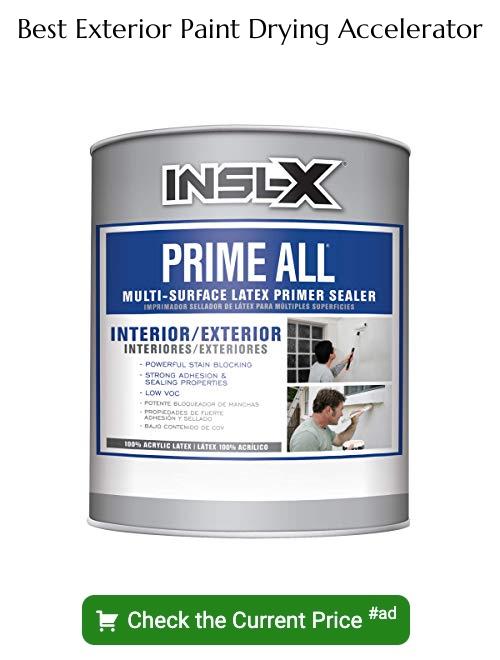Last updated on
Diving right into the nitty-gritty, it’s critical to know how long exterior paint takes to dry because rushing the process could mean imperfections that not only mar the appearance but compromise the durability of the paint job.
Key takeaways:
- Understanding the difference between drying and curing
- Latex-based paint dries in 1-4 hours, cures in 28-30 days
- Oil-based paint dries in 6-8 hours, cures in up to 7 days
- Factors that affect drying time: temperature, humidity, rain, wind, thickness
- Ideal weather conditions for drying: 50-85°F, low humidity, no rain
Exterior Paint: Dry Vs. Cured and Why It Matters
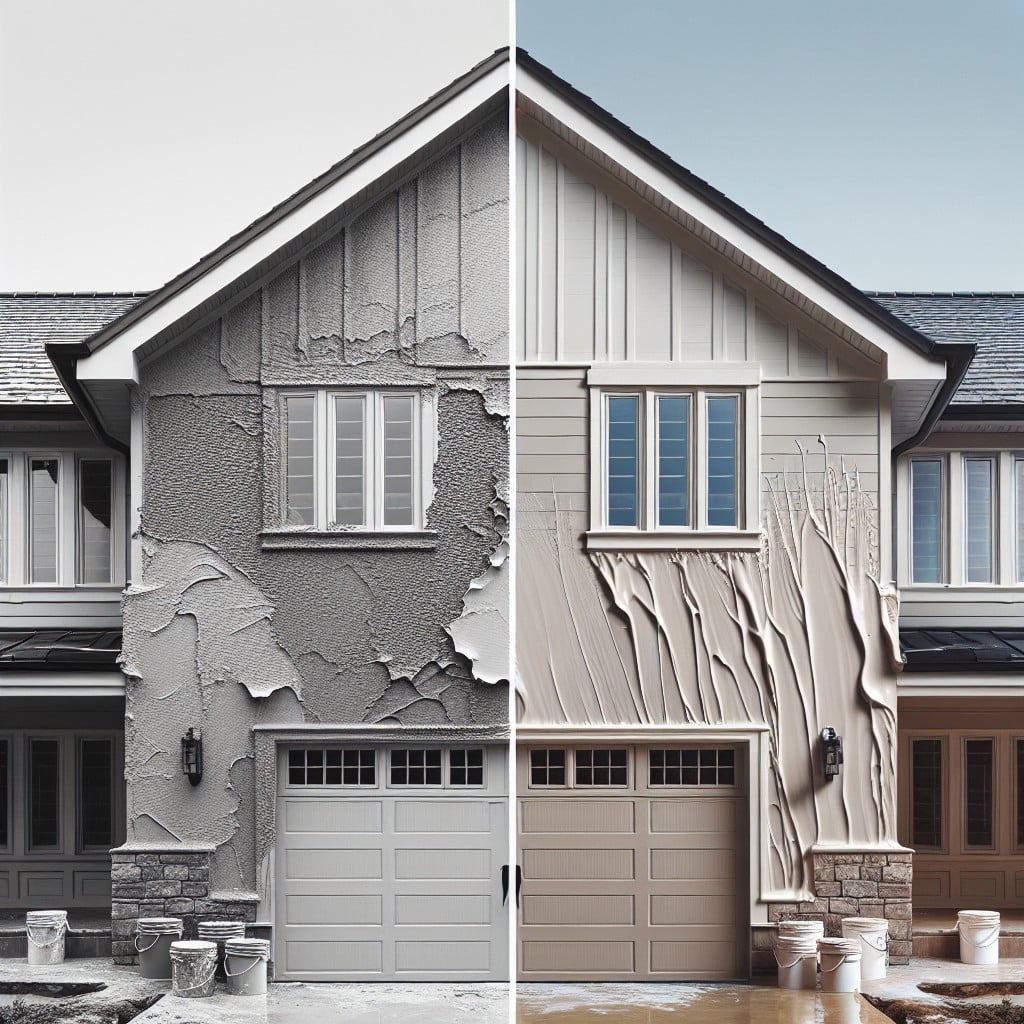
Understanding the difference between drying and curing is key to a successful exterior paint job. When paint dries, it simply means the solvent (whether water for latex paint or mineral spirits for oil-based paint) has evaporated, leaving the paint’s surface dry to the touch. However, drying is just the initial stage; the paint is still vulnerable at this point and can easily be damaged.
Curing, on the other hand, refers to the complete hardening process. During curing, the paint’s coating achieves its maximum durability and adhesion. This process takes significantly longer than drying and requires the chemical reactions within the paint to fully finish.
The importance of recognizing the distinction between these two phases lies in the handling of the painted surface:
- Dry paint allows you to add additional coats or touch up small areas without waiting for the full curing time.
Cured paint means the surface is ready for regular use, able to withstand the elements and resist wear and tear.
Respecting the proper time frames for each stage ensures that the paint performs as expected, providing a protective and lasting finish.
How Long Does It Take for Exterior Paint to Dry?
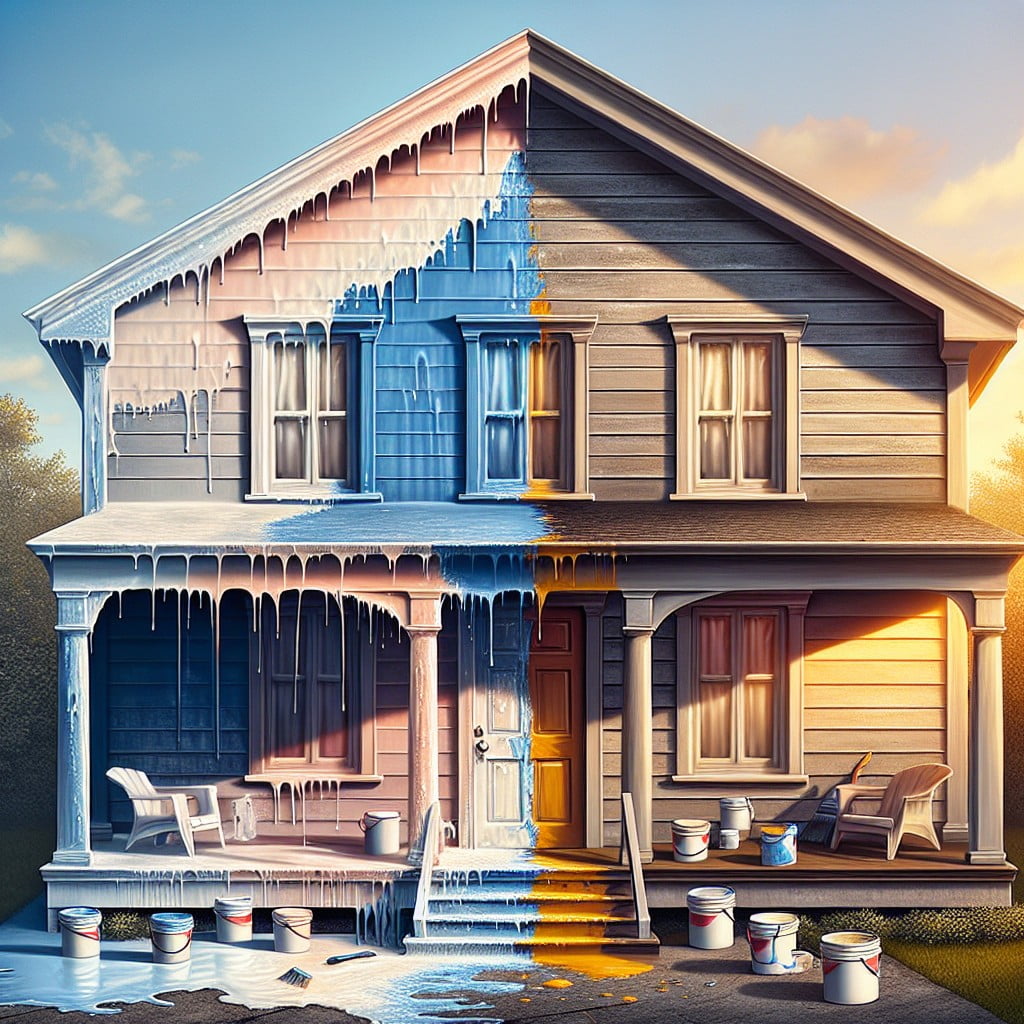
Understanding the distinction between drying and curing is pivotal for the successful application of exterior paint. Immediately after application, the paint begins to lose its moisture to the air or substrate, leading to a state where it feels dry to the touch.
For latex-based paints, the drying process typically spans from one to four hours. Conversely, oil-based options require a more extended period, often six to eight hours before tackiness subsides.
It’s crucial to recognize that the term ‘dry’ merely signals that the paint is no longer wet on the surface; it doesn’t indicate complete bonding or the paint’s readiness to withstand the elements.
Achieving a fully cured state is a deeper, chemical process that enables the paint to deliver its full durability and color integrity. This process can take up to 30 days, depending on environmental conditions and the type of paint used.
During this period, the paint’s film strengthens as it fully adheres to the painted surface. Patience and attention to these timing details ensure a lasting and resilient exterior finish.
Latex-Based Exterior Paint Drying Time
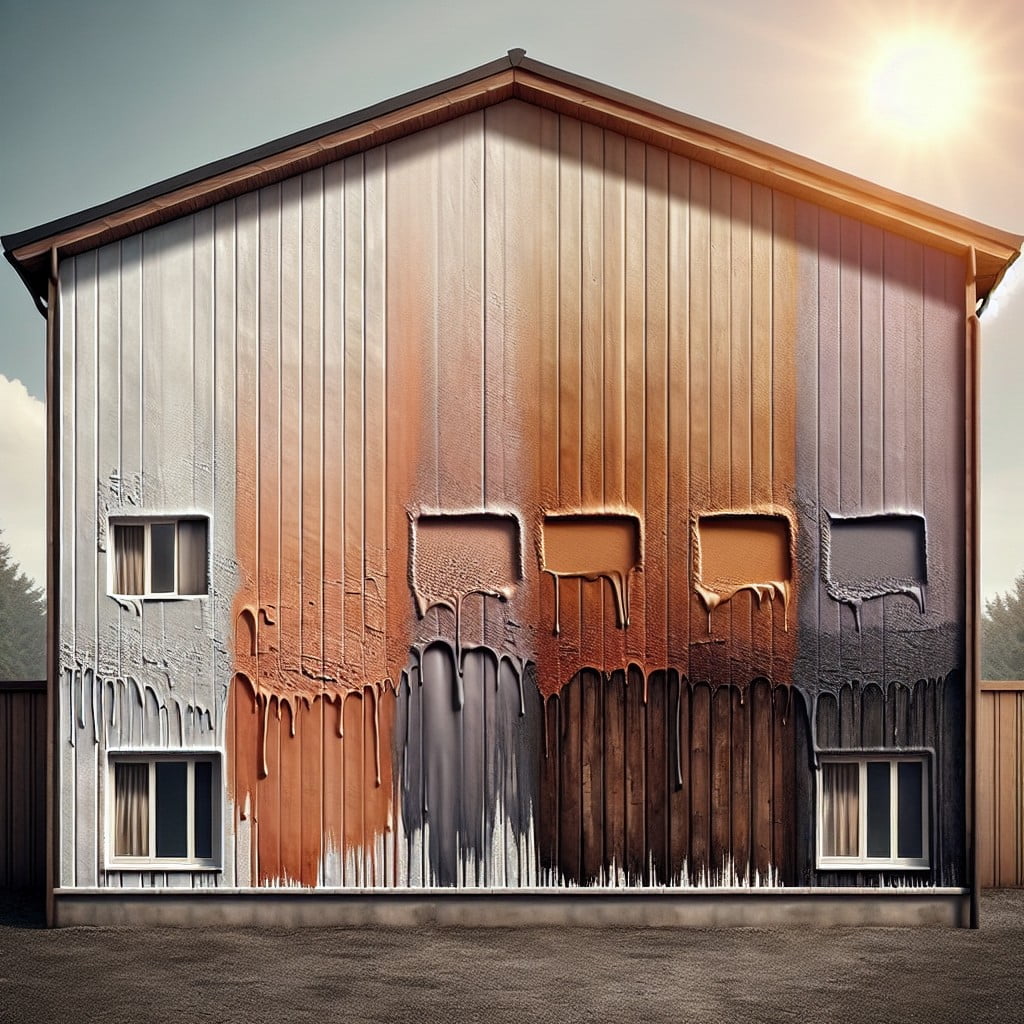
Latex-based paints are praised for their quicker drying time compared to oil-based alternatives. Under optimal conditions, which include moderate temperature and humidity, a latex paint on an exterior surface can become dry to the touch in as little as one hour. This quick-drying feature is particularly useful for painting projects that need to be completed in a limited time frame.
However, for the paint to be ready for a second coat, a waiting period of about four hours is typically recommended. It’s important to note that even though the surface may feel dry, the underlying layers might still be curing. Full curing, which means the paint has reached its maximum hardness and durability, usually takes a longer period — about 28-30 days.
The paint’s thickness and the presence of multiple coats can extend this drying time. Thinner applications facilitate faster drying, whereas additional layers will require more time to set properly. Always refer to the manufacturer’s guidelines for the best results as formulations may vary.
Oil-Based Exterior Paint Drying Time
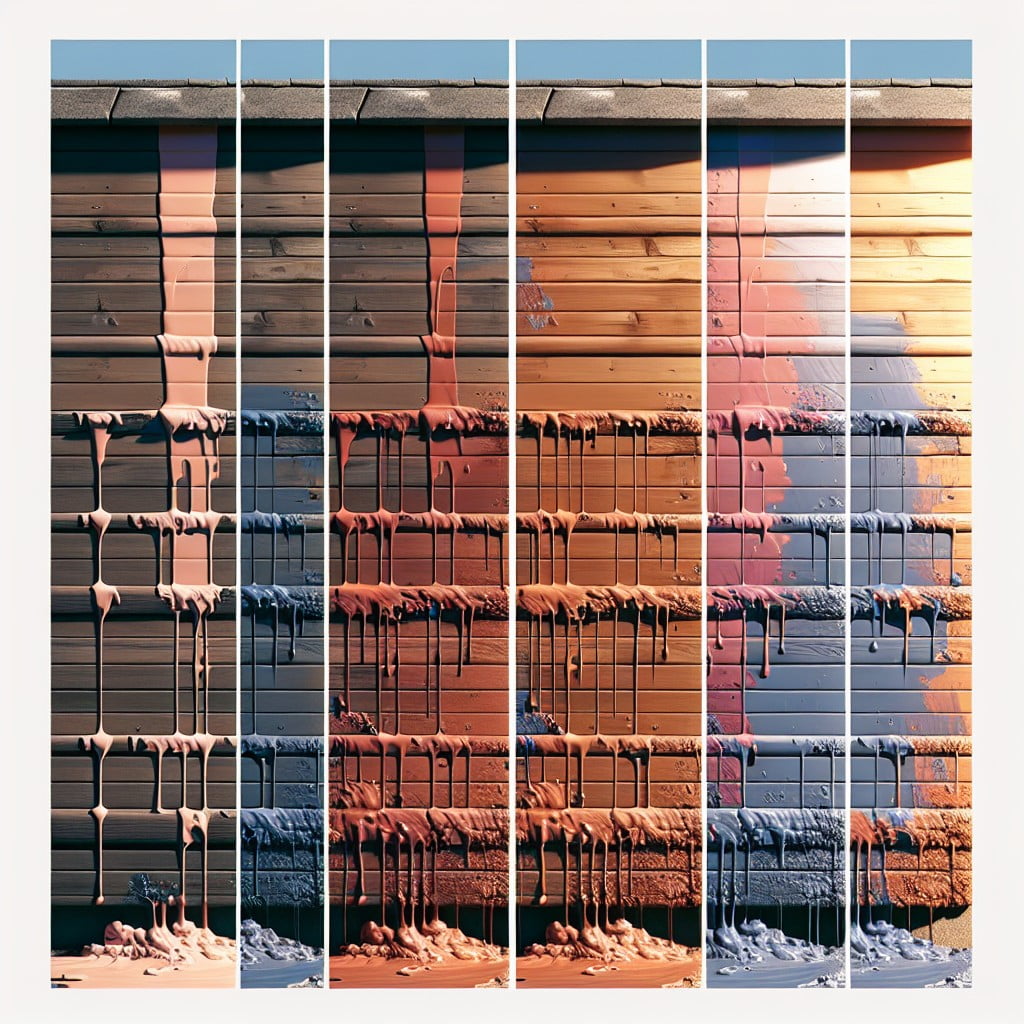
Oil-based paints typically require six to eight hours to become dry to the touch and may need as much as 24 hours before applying another coat. With a considerably longer drying time than latex-based options, these paints demand patience and an eye on the weather forecast. The benefits, however, include a harder finish and better resistance to temperature fluctuations, making them ideal for trim work and surfaces that endure more wear and tear.
To ensure the best results:
- Wait for clear weather, as humidity levels can extend drying times.
- Allow for full curing, which can take up to seven days, depending on the conditions.
- Avoid painting when temperatures are below 40 degrees Fahrenheit since oil-based paint won’t dry properly in cold conditions.
- Plan your painting project around the forecast to avoid unexpected weather delays.
Remember, rushing the process could compromise the paint’s durability and finish. Allow plenty of time for each layer to dry thoroughly before recoating.
6 Factors That Can Affect Drying Time for Exterior Paint
Temperature plays a crucial role; ideal conditions are 50-85°F for latex paint and 45-90°F for oil-based. Paint dries too quickly in extreme heat, potentially leading to an uneven finish, while cold temperatures can prolong drying times significantly.
Humidity levels are equally important. High humidity can extend drying times by preventing the water in latex paint or the solvent in oil paint from evaporating. Conversely, low humidity may speed up the process.
Rain or snow exposure before the paint has had a chance to adequately dry can wash away the paint or cause imperfections in the finish. Always check the weather forecast before beginning an exterior painting project.
Wind can be a double-edged sword. A light breeze can help in drying the paint faster by circulating air and reducing humidity; however, too much wind might cause debris to stick to wet paint or speed up the drying too much, leading to cracks.
The thickness of the paint layer affects drying times. Thicker layers demand more time to dry than thin ones. Always aim for even application, following the manufacturer’s guidance for the best results.
An undercoat or primer can extend overall drying times but is essential for proper adhesion and longevity of your exterior paint job. A primer will need to dry completely before the application of the topcoat.
Temperature
Ideal temperature conditions for exterior paint to dry effectively range between 50 to 85 degrees Fahrenheit.
When the mercury dips below 50 degrees, paint tends to take longer to set as the cooler air prevents the solvent from evaporating quickly.
On the flip side, excessive heat can cause the paint to dry too rapidly, which may lead to cracks or an uneven finish.
It’s essential to check the manufacturer’s recommendations, as some paints are formulated to cure properly within a broader temperature spectrum.
If painting in cooler temperatures, opt for paints specifically designed for low temperatures, often labeled as “cold weather” paints.
Keep in mind that the surface temperature can be different from the air temperature; sunlight and shading can significantly affect it.
If possible, try to paint surfaces in direct sunlight during cooler parts of the day and in the shade when it’s hotter.
Humidity
Humidity plays a pivotal role in the drying time of exterior paint. Higher humidity levels slow down the evaporation of the water or solvents in paint, leading to longer drying times. Conversely, low humidity can speed up the drying process.
Consider these points regarding humidity:
- Optimal Conditions: Aim for a humidity level between 40-70% for the best drying conditions.
- Dew Point: Be aware of the dew point, which is the temperature at which condensation begins. Painting when temperatures are near the dew point can cause moisture to settle on the wet paint, prolonging drying.
- Timing: It’s best to paint when humidity is dropping during the day – mid-morning or mid-afternoon often provide ideal conditions.
- Monitoring: Keep an eye on the weather forecast not just for rain but also for humidity levels.
- Hygrometers: Use this tool to measure the moisture in the air to ensure conditions are suitable before you begin your painting project.
Remember that while paint may feel dry to the touch, high humidity can keep the deeper layers from curing quickly, so it’s essential to consider the full drying time provided by the manufacturer.
Rain or Snow
Precipitation is a crucial factor to consider when painting exteriors. Moisture from rain or snow can significantly prolong the drying process of exterior paint. When water molecules from rain or melting snow come into contact with the wet paint, they dilute the formula and impede the evaporation of the solvents in the paint, which is essential for the curing process.
Avoid painting within 24 hours before or after a rainstorm, and always check the weather forecast. Doing so ensures that the paint has enough time to form a protective film before being exposed to moisture. In the case of snow, wait for warmer, drier weather, as painting over snow-covered surfaces is ineffective and can lead to peeling or chipping once temperatures rise.
If you’ve just finished painting and unexpected rain or snow arrives, covering the painted surfaces with a protective tarp can help minimize damage. However, this is only a temporary measure; the painted areas should be properly dry before any significant precipitation occurs.
Wind
A gentle breeze can be beneficial in quickening the drying process by dispersing solvents from the paint surface. However, too much wind can attract dust and debris, compromising the smooth finish. Additionally, strong winds can cause the paint to dry too rapidly, leading to imperfections such as brush marks or uneven texture.
It’s essential to aim for a day with mild wind conditions to strike the right balance for optimal drying. If you must paint in windy conditions, consider setting up windbreaks or adjusting your painting schedule to times when the wind dies down.
Thickness
The thickness of the paint layer can significantly impact the drying time. A heavier application will undoubtedly take longer to dry than a thinner one.
When using more viscous paints or adding multiple layers for opacity and protection, anticipate extended drying times. It’s essential to follow the manufacturer’s guidelines regarding the recommended thickness for each coat.
If you apply paint too thickly, you risk prolonging the drying time and may even cause imperfections such as drips or a less even finish, potentially necessitating corrective work later on.
FAQ
How long does exterior paint need to dry before rain?
Exterior paint typically requires six hours of drying time in sunlight before rain, but for optimum durability, it should ideally be exposed to five days of normal weather condition.
How long does exterior paint take to cure?
Exterior paint generally requires up to 30 days to fully cure.
What happens if it rains on fresh exterior paint?
If rain falls on fresh exterior paint, it can lead to streaks, water spots, and other imperfections, or even wash away the paint, increasing the likelihood of peeling and flaking.
Does exterior paint dry faster in the sun?
Yes, exterior paint does dry more quickly in the sun but this rapid drying can compromise the quality of the paint application due to insufficient absorption into the surface.
What are the ideal weather conditions for exterior paint to dry properly?
The ideal weather conditions for exterior paint to dry properly are mild temperatures ranging from 50-85°F, low humidity, and an absence of wind and rainy forecasts for at least 24 hours.
Can exterior paint application be expedited with the use of drying agents?
Yes, the application of exterior paint can be expedited with the use of drying agents.
Will moisture in the air significantly affect the drying time of exterior paint?
Yes, high levels of moisture in the air can significantly prolong the drying time of exterior paint.
Recap:
